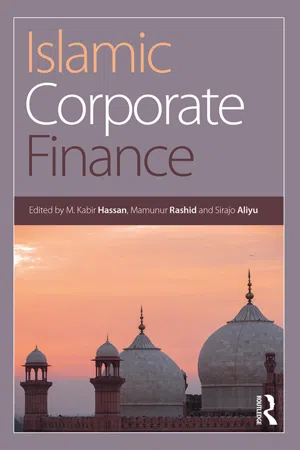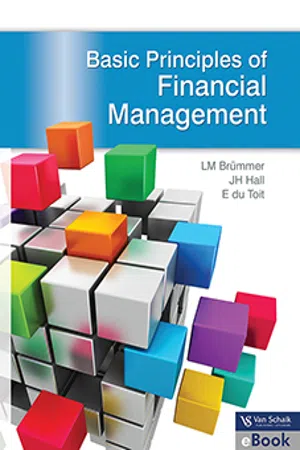Economics
Financial Structure
Financial structure refers to the composition of a firm's liabilities and equity. It encompasses the mix of short-term and long-term debt, as well as the proportion of equity financing. A firm's financial structure influences its ability to raise capital, manage risk, and achieve its financial objectives.
Written by Perlego with AI-assistance
Related key terms
3 Key excerpts on "Financial Structure"
- eBook - ePub
Growth and Policy in Developing Countries
A Structuralist Approach
- José Antonio Ocampo, Codrina Rada, Lance Taylor(Authors)
- 2009(Publication Date)
- Columbia University Press(Publisher)
CHAPTER 6 Financial StructuresT HE FINANCIAL SIDE of an economy undergoes structural change through the development process. There is no strict progression of financial development and initial conditions matter. But, broadly speaking, new Financial Structures gradually evolve, in a process that can be seen as a sequence of five “stages” of increasing financial complexity. Understanding Financial Structures is crucial for the analysis of macroeconomic policy in chapter 7 , since they can increase policy flexibility but can also constrain policy maneuver and generate risks of destabilization for the entire macroeconomy.National Financial AccountsThe underlying concepts are a blend of flows of funds accounting and more traditional approaches. The main distinction lies in the treatment of “equity” or “net worth.” When consolidated economy-wide, the net worth of the business sector has to be the value of its assets less liabilities. According to the flows of funds, the liabilities include debt plus the market value of the sector’s outstanding shares. A more conventional alternative is to define “ equity” as the value of assets minus debt. In the late 1990s in the United States during the stock market boom, business net worth was negative by the former definition and equal to zero (as it always is) by the latter. Net worth in the U.S. flows of funds was positive as of mid-2008.Table 6.1 defines the balance sheets for six types of agents, or sectors: private non-financial actors, the government, the central bank, commercial banks, a non-bank financial sector, and the rest of the world.1 The entries represent values of stocks - eBook - ePub
- M. Kabir Hassan, Mamunur Rashid, Sirajo Aliyu, M. Kabir Hassan, Mamunur Rashid, Sirajo Aliyu(Authors)
- 2019(Publication Date)
- Routledge(Publisher)
3Islamic corporate finance
Capital structure
Mohamed Eskandar Shah Mohd Rasid, Ajim Uddin and Mohammad Ashraful Ferdous ChowdhuryIntroduction
As you read this chapter, you will understand that apart from the investment decision, the financing strategy, i.e. finding an optimal combination between equity and debt to finance operation and growth, is crucial for firms’ long-term survival. When we say ‘optimal’, we mean a combination that strikes a balance between the nature of business and the risk of bankruptcy. By reading this chapter, you will appreciate the fact that the financing decision is very critical, and not getting it right is not an option for any firms. Often, firms have to wind up or enter liquidation due to wrong financing choices.As discussed previously, firms have two main sources of financing: debt and equity. Equity consists of common stock, preferred stock, and retained earnings. Equity is perpetual, i.e. these securities have no underlying maturity and the owners can hold them as long as they want. On the other hand, debt by default has a fixed maturity, except for perpetual bonds. Based on the maturity period, debt can be short-term, such as commercial paper, or long-term, such as bonds and notes payable. The combination of short-term debt, long-term debt, common equity, preferred equity, and retained earnings, as sources of financing, determines the firm’s capital structure. In general, firms have three options when it comes to financing their investment: either 100% debt, or 100% equity, or a combination of debt and equity. Firms will start with 100% equity and then decide how much debt they want to raise, thence altering their balance sheet and capital structure.The capital structure decision involves choosing the appropriate combination of these financing sources so as to maximize shareholders’ wealth. However, deciding the best mix is not easy. Each of these financing sources has its own costs, both direct costs and indirect costs. Direct cost is the cost associated with issuing each security, such as interest paid to the bondholders or the required rate of return expected by shareholders; whereas indirect cost arises from the associated risk of issuing debt and bankruptcy cost. A successful financial manager has to weigh each of these sources’ feasibility and associated costs and then decide the optimal capital structure for the firm. Due to the risk and cost constraint, capital structure choices remain a pertinent issue in modern finance. Notwithstanding the progress that we have witnessed since the seminal work of Modigliani and Miller (1958), the debate on what is optimal remains an intriguing issue among academics. In the conventional space, the trade-off hypothesis, pecking order theory, and free cash flow hypothesis continue to be the building blocks for empirical works, in which the findings enlighten our understanding of the behavior of firms, particularly the insight behind their financing choices. Nevertheless, the same theories may or may not apply to shariah- compliant firms due to the constraints or limitations imposed on them. The quest to understand the financing behavior of shariah- - eBook - ePub
- Brümmer LM, Hall JH, Du Toit E(Authors)
- 2017(Publication Date)
- Van Schaik Publishers(Publisher)
capital structure, a most important concept in financial management. The total debt capital invested in the organisation is the sum of the long-term debt capital and the current liabilities.Remember that shareholders’ equity is not debt capital, a mistaken perception held by many.The part marked Q.1 reflects the long-term or fixed assets. InQ.3, we have the short-term or current assets. The ratio of fixed assets to current assets is known as the asset structure. An organisation which has a high ratio of fixed assets to current assets is said to be capital intensive because of the relatively large investment of capital in fixed assets, which are generally financed by long-term capital.These demarcations in the Statement of Financial Position are important, as they help us to understand the different financial concepts, and show where these 49 are applied in the organisation’s financial and asset structures. It is equally important to distinguish between the various structures and to know which are long term and short term respectively.Elements of the Statement of Financial Position
We now briefly discuss each of the items on the Statement of Financial Position, as we did with the Statement of Comprehensive Income. We shall discuss the components of each part under its own heading, beginning with the long-term capital.Long-term capital
Introduction
The long-term capital, which constitutes the organisation’s capital structure, is reflected in the part marked Q.2 under the heading “Capital
Index pages curate the most relevant extracts from our library of academic textbooks. They’ve been created using an in-house natural language model (NLM), each adding context and meaning to key research topics.


